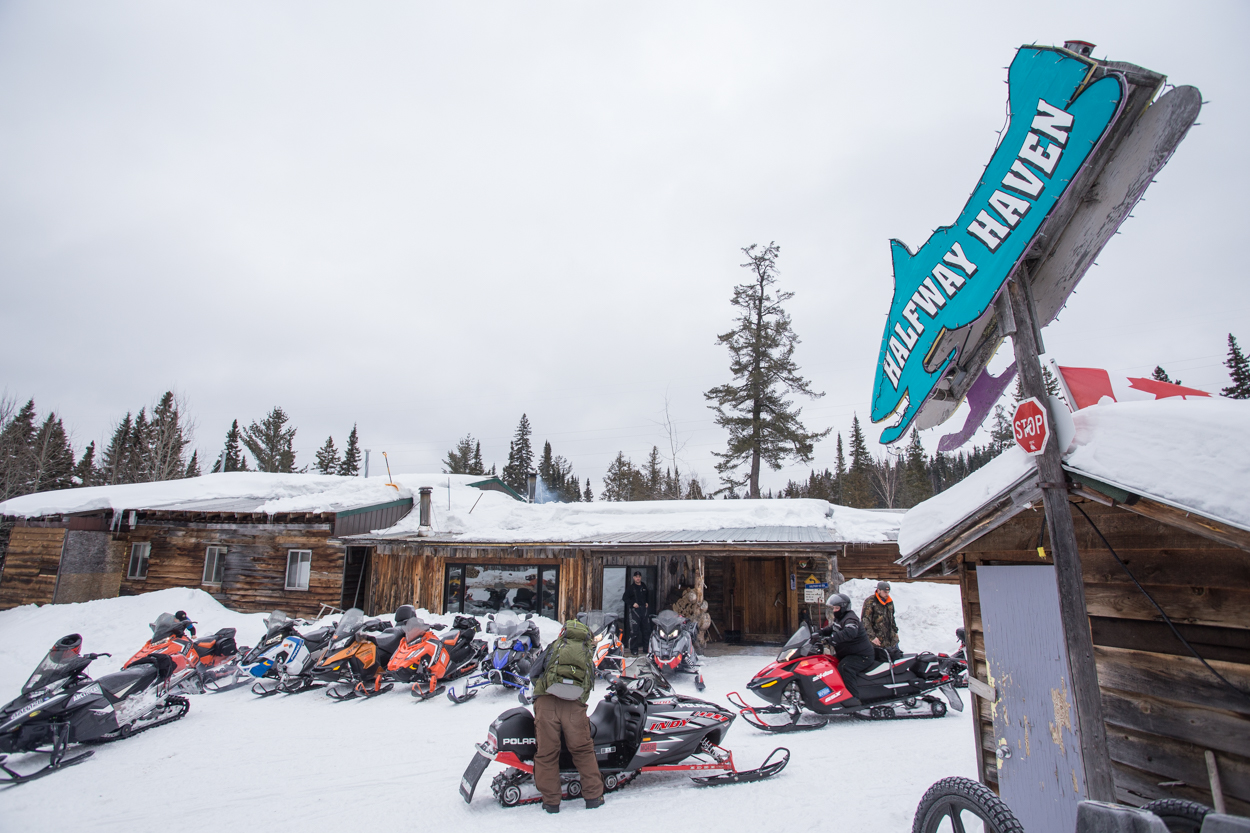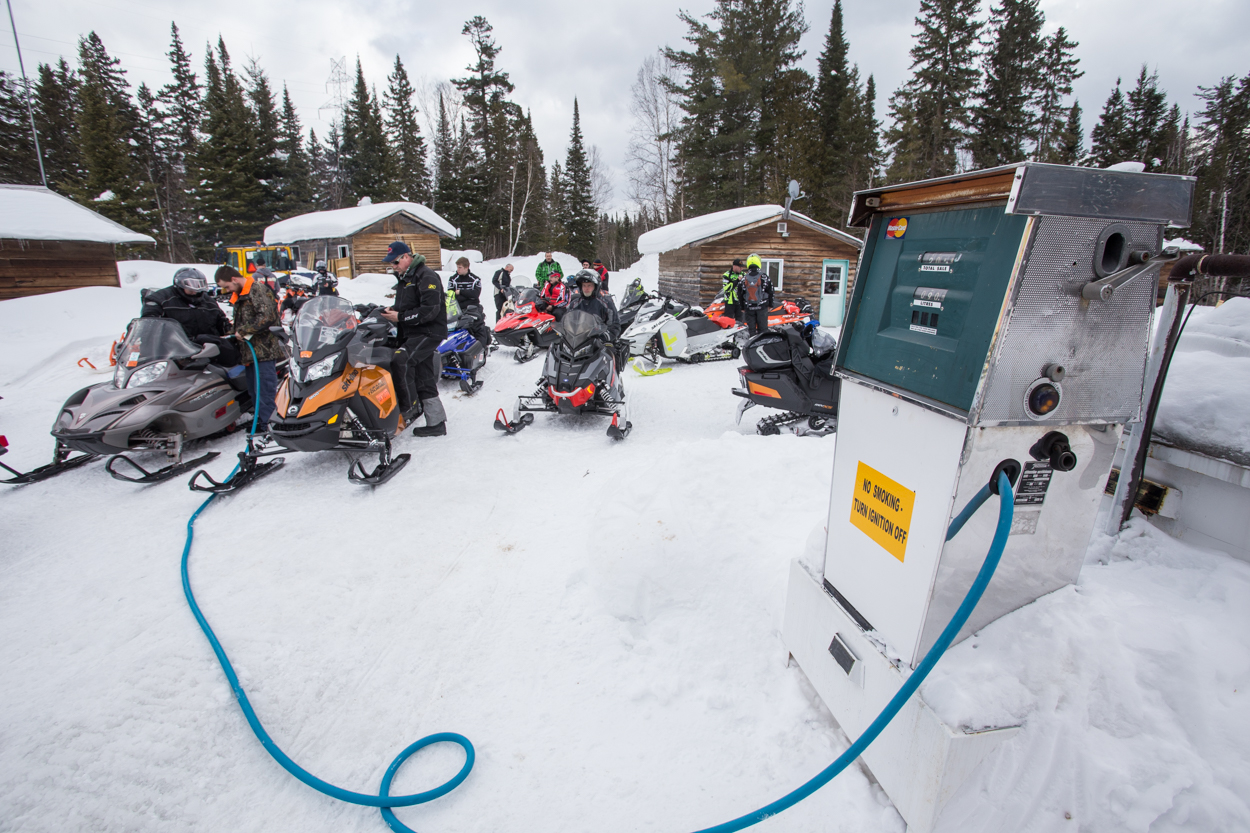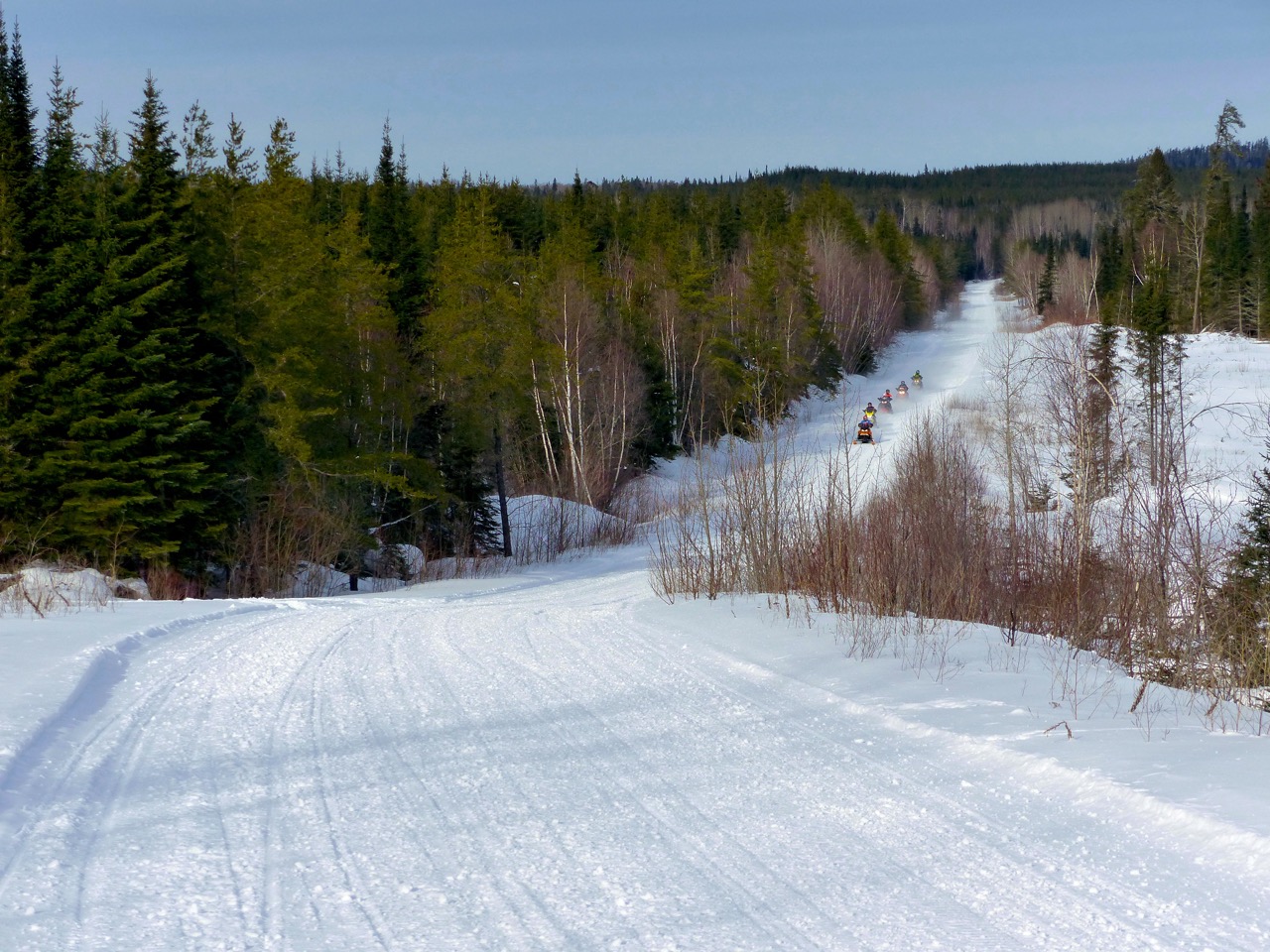The Story Behind Essential Services On Remote Trails…

Photo © by Craig Nicholson
Related: Algoma Country Wilderness Tour
In April 2021, an Ontario remote snowmobile outpost called Halfway Haven announced it “will not re-open for the upcoming seasons.” Through an amazing amount of hard work since then, it now looks like Halfway will temporarily open for one more winter. But unless major financial support is found soon, this will only postpone permanent closure – and that’s what promoted me to write this article. It speaks to the vulnerability of some important trails and the challenges facing the likes of Halfway Haven…
Where Is a Remote Snowmobile Outpost Essential?
A remote snowmobile outpost can be a necessity on any organized trail system. Most every trail system has at least one remote snowmobile outpost, an isolated sanctuary anchoring far-flung snowmobile trails. You know, those long stretches of groomed corridors connecting small, outlying communities. Pockets of civilization separated by massive tracts of otherwise impenetrable wilderness.
Frequently, these sections of trail are so long or so distant that their very existence depends on the facilities provided by a remote snowmobile outpost. Trails in more populated regions often have many service choices. But these out of the way corridors are typically the only one available in the area. Same goes for the remote snowmobile outpost.

Only 97 kilometres more to go! Photo credit: Destination Ontario
But all too often, everyone takes a remote snowmobile outpost for granted. We snowmobilers simply expect it to be there and open at our beck and call. Some even complain about how much it charges or the limited choices that may be on offer. Maybe it’s time to take another look…
About Halfway Haven
A remote snowmobile outpost can vary in size, age, style, amenities and accessibility. Some offer scarce visitor amenities in villages that may have more letters in their names than residents. Ontario examples of these include Heaven 11 Plaza (TOP A, Opasatika), Tree Bear Camp (TOP C, Shining Tree) and Foleyet General Store TOP C101D, Foleyet).
But others stand apart, because they are nowhere near anything. They are arguably the most irreplaceable of all because there are no other alternatives. In Ontario, Base Camp Abitibi Canyon and Halfway Haven stand out in this unique group. Let’s look at Halfway Haven, a prime Ontario example of such a frontier outpost.
The iconic Halfway Haven is located at Jeep Lake, midway between Searchmont and Wawa on OFSC Trans Ontario Provincial (TOP) Trail D. Otherwise, it’s only accessible by a long, 60-kilometre drive on a tenuous, often treacherous, tertiary road from Highway 101. Halfway isn’t connected to the hydro grid, and has no phone lines or cellular towers nearby. Operated by self-reliant, pioneer-spirited individuals, this “frontier” outpost is a totally self-sufficient island where supplies must be arranged well in advance and trucked in from miles away at extravagant extra cost.

Photos Credit: Martin Lortz for Destination Ontario
Keeping Groomers Running
Yet its essential services are indispensable to area grooming operations. This necessity starts with providing crucial fuel for groomers that they can’t get anywhere else. Without it, these machines wouldn’t be able complete their runs from Searchmont on TOP D, from Wawa on TOP D and from Chapleau on TOP C101D.
The equation is simple: without diesel availability midway on their runs, grooming operations ceases. And if there’s no groomers, 370 kilometres of premier TOP trail would have to close for safety and liability reasons. Such a loss would also sever trail connectivity, cutting off snowmobile access to TOP D and TOP D108A from Wawa north to Hearst, and impacting winter business and jobs in at least 7 communities along the way.
But that’s not all. A remote snowmobile outpost like Halfway Haven also provides much-needed food and rest for groomer operators. Plus, emergency rescue, service and repairs if needed. It acts as a safe shelter and offers them free overnight lodgings. Halfway helps break up the monotony and loneliness of operating a groomer in the middle of nowhere for hours on end. Its facilities enhance operator safety and security, while providing peace of mind and a welcoming refuge to look forward to. That’s a second reason why, without Halfway Haven, grooming operations couldn’t continue.

It’s all about the gas! Photo credit: Martin Lortz for Destination Ontario
Keeping Snowmobilers Going
Of course, groomers aren’t the only machines that need refuelling. Most snowmobilers get downright antsy on remote trails if their gauges drop below half with many miles to go. Sure, today’s sleds deliver the best fuel economy we’ve ever had. And fuel caddies, like BRP’s unrivalled LINQ system, allow us to carry extra on board. But have you ever experienced that sinking feeling of arriving at the next gas stop on fumes, after the warning light’s been on for way too long? Bet you’ll never want to do that again!
Besides, we all know about unexpected variables and what they can do to fuel consumption. Like having to tow a broken-down sled. Or push fresh snow for a couple of hours. So that makes frontier outposts like Halfway Haven equally crucial for snowmobiler safety, security and peace of mind. To say nothing of snowmobiler comfort by keeping those groomers rolling.
As a remote snowmobile outpost, Halfway Haven also keeps our bodies going. Having a place to rest, warm up, eat and even stay overnight can be a game changer. It can make the difference between an endurance marathon and a fun adventure. And knowing that there’s a safe haven ahead in an emergency or when caught in a sudden storm is worth its weight in gold!
What Does It Cost To Operate a Remote Snowmobile Outpost?
So, what does it cost to operate a remote snowmobile outpost like Halfway Haven? For example, winter ploughing on that 60-kilometer stretch of access road racks up about 10-16 hours per outing, depending on the snowfall and costs up to $1,000 each time. That doesn’t include annual maintenance and repairs of about $30,000 for plough/grader equipment. Or the $10,000 to $15,000 annual road maintenance bill to keep it cut back, graded and to fix washouts, plugged culverts and whatever else Mother Nature inflicts. Meanwhile, heating Halfway Haven for the winter costs about $40,000 for generator fuel, $15,000 for propane and $7,000 for wood. In addition, Halfway Haven also purchases about 70,000 litres of snowmobile fuel each winter, with a minimum order of 10,000 litres, plus delivery charges, all paid in cash, not on account.
Yet, despite its remote location and unique requirements, Halfway Haven is held to the same rigorous operating standards, regulations and protocols as any other hospitality business serving fuel and food. Be that as it may, the cost of staying compliant soars exponentially when you’re positioned in the middle of nowhere. Just one more exorbitant cost of staying in business.

Halfway Haven makes riding trails like this possible. Photo © by Craig Nicholson.
Questions Worth Asking
With unavoidable expenses like these piled on top of the normal operating costs for a hospitality operation, is it any wonder that remote snowmobile outpost prices are higher? What are we willing to pay to keep the doors open with several staff totally isolated in the wilderness for most of the winter to serve our needs and keep the trails open?
More important, what are elected officials, funding agencies, economic development offices, tourism groups and other stakeholders willing to do to level the playing field of ongoing operating and infrastructure costs required to keep this remote snowmobile outpost and others like it viable?
The regional economic impact from Algoma Country snowmobiling is over $25 million annually. Is this worth sustaining? With at least another $5 millions of economic activity potentially impacted in neighbouring areas, shouldn’t the powers-that-be step up to protect the winter business, jobs and taxes that snowmobile trails generate? To say nothing of how a remote snowmobile outpost can also contribute to recreational trail opportunities in other seasons, like ATV, dual sport and side by side riding, along with hunting and fishing activities. So, when’s a serious intervention going to happen – before it’s too late? Or do we just give up and close any vulnerable trails and go ride somewhere else? Tough decisions either way, and ones that Halfway Haven and others like are facing today.
The tips and advice in this blog are the opinions of the author, may not work in every situation and are intended only for the convenience and interest of the reader, who has the personal responsibility to confirm the validity, accuracy and relevancy of this information prior to putting it to their own use.
